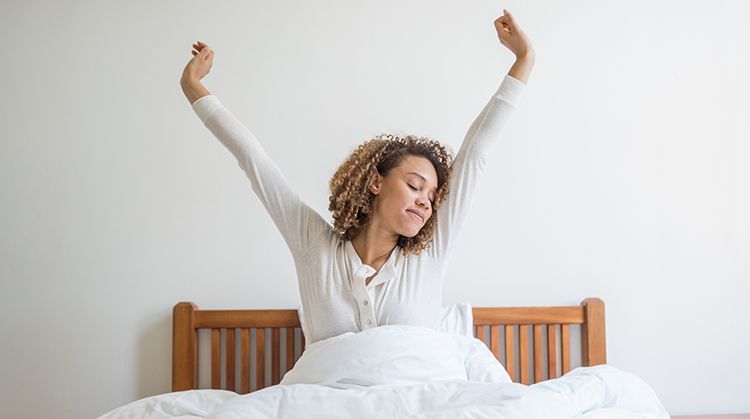Habits for Better Sleep
Rest is an essential section of our well-getting and plays a significant role in healing, muscle tissue recovery, and memory. Grownups should obtain seven or even more hours of rest a night. School-aged kids and teenagers want eight to 11 hrs. Regardless of age group, everyone should get yourself a minimal of seven or even more hours of rest each night.
Handling your rest is key to your current health. Not getting good enough sleep could be a issue and can donate to the growth of chronic pain. In addition, it may worsen panic or depression symptoms. Therefore, what in the event you do if you're not getting enough rest?
Sleep could be altered for several factors, but there are several things that it is possible to control with regards to sleep. Risk aspects for short rest spans include obesity, actual physical inactivity, everyday smoking, and an excessive amount of alcohol use. For those who have trouble getting comfortable during the night, a actual therapist will help you with positioning.
After an assessment, physical therapists create therapy programs for a patient's particular needs and targets.
Good rest hygiene, the exercise of healthy behaviors that can be done to affect your rest routine, is a good place to begin. Healthy rest requires your energy throughout the day, along with before bedtime.
Attempt these sleep hygiene ideas to improve the high quality of one's sleep.
Throughout the day
1. Do more exercise.
Staying energetic helps in obtaining restful rest. Once cleared by way of a health care service provider, make an effort to get 150 mins of moderate exercise every week. A bodily therapist will help you find the appropriate exercises to your requirements and abilities.
2. Boost your contact with light.
Having less Vitamin D is associated with a higher threat of sleep problems. Consider upping your exposure to lighting throughout the day.
3. Avoid lengthy napping.
Being an adult, invest the naps, maintain them to 20 minutes or much less.
4. Don’t smoke cigarettes.
If you're a smoker, give up smoking 2-3 hours prior to going to rest.
5. Restriction alcohol.
In the event that you drink alcohol, achieve this sparingly.
6. Avoid caffeine after midday.
Caffeine is really a stimulant that can cause you to more alert and restriction restfulness. Additionally it is a diuretic that may increase your have to urinate during the night.
Before mattress
7. Obtain enough sleep.
Established a bedtime which will allow seven or even more hours of rest.
8. Maintain a sleep plan.
Awaken and go to sleep simultaneously each day.
9. Set the temperatures.
Based on the National Sleep Base, around 65 degrees produces the best sleep. Ensure that the heat range is correct for you personally, and you possess the required blankets and pillows for the comfort.
10. Develop a relaxing bedtime schedule.
This might include dimming the lighting, avoiding the usage of technologies, and reducing sounds. Using meditation or gentle relaxing sounds might help get ready you for rest.
Remember some medicines may change how you sleep. Speak to your physician or pharmacist about timing your medicines to market a balance of rest and wakefulness.
If sleep remains challenging, keep a rest diary for more information about your sleep styles and discuss it together with your actual physical therapist. A PT can also help you in the event that you experience discomfort or discomfort that limitations your actions or disturbs your rest. Learning the proper exercises and positions could be ideal for you.
Physical therapists are motion experts. They improve standard of living through hands-on care, individual education, and prescribed motion. It is possible to contact a actual therapist straight for an evaluation. To discover a bodily therapist in your town, visit Look for a PT.
Additional Resources:
Bibliography
Dean Electronic, Skinner M, Myezwa H, et al. Wellness competency standards in actual physical therapist exercise. Phys Ther. 2019;99(9):1242–1254. Article Overview in PubMed.
Vega R, Miro J, Esteve R, Ramirez-Maestre C, Lopez-Martinez AE, Jensen MP. Sleep disturbance in people with actual disabilities and chronic discomfort: the role of bodily, emotional, and cognitive elements. Disabil Wellness J. 2019;12(4):588–593. Article Overview in PubMed.
Vega R, Racine M, Castarlenas Electronic, et al. The part of sleep high quality and exhaustion on the advantages of an interdisciplinary therapy for adults with persistent pain. Discomfort Pract. 2019;19(4):354–362. Article Overview in PubMed.
Gao Q, Kou T, Zhuang B, Ren Y, Dong X, Wang Q. The Association between Supplement D insufficiency and sleep problems: a systematic evaluation and meta-analysis. Nutrients. 2018;10(10):1395. Post Overview in PubMed.
Siengsukon CF, Miller KL. Sleep administration in the house. https://www.homehealthsection.org/assets/docs/Sleep_Kit_3-2018.pdf. Released March 2018. Accessed March 2, 2020.
Ohayon M, Wickwire EM, Hirshkowitz M, et al. National Sleep Basis’s rest quality recommendations: first record. Sleep Health. 2017;3(1):6–19. Article Overview in PubMed.
Siengsukon CF, Al-dughmi M, Stevens S. Sleep wellness promotion: practical details for actual physical therapists. Phys Ther. 2017;97(8):826–836. Article Overview in PubMed.
Hirshkowitz M, Whiton K, Albert SM, et al. National Sleep Base’s rest time duration suggestions: methodology and results overview. Sleep Health. 2015;1(1)40–43. Article Overview in PubMed.
Irish Una, Kline CE, Gunn HE, Buysse DJ, Hall MH. The function of sleep hygiene to advertise public health: overview of empirical evidence. Rest Med Rev. 2015;22:23–36. Article Overview in PubMed.
Kothari DJ, Davis MC, Yeung EW, Tennen HA. Positive affect and discomfort: mediators of the within-day relation linking rest quality to action interference in fibromyalgia. Discomfort. 2015;156(3):540–546. Content Overview in PubMed.
Finan PH, Goodin BR, Smith MT. The association of rest and discomfort: an upgrade and a route forward. J Discomfort. 2013;14(12):1539–1552. Write-up Overview in PubMed.
